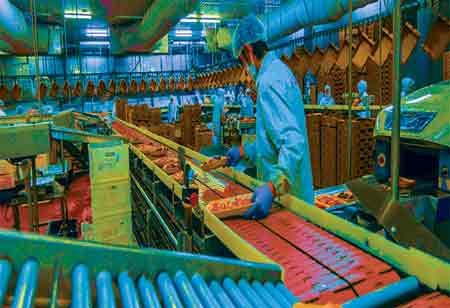Thank you for Subscribing to Food Business Review Weekly Brief
The Growing Popularity of Frozen Foods
Fresh fruits and vegetables are prepared and quickly frozen within hours of harvesting to prevent loss of flavor, quality, and nutrition.

By
Food Business Review | Thursday, May 11, 2023
Stay ahead of the industry with exclusive feature stories on the top companies, expert insights and the latest news delivered straight to your inbox. Subscribe today.

Freezing preserves the freshness of food. Foods intended for the freezer are selected at their nutritional and flavorful peak, swiftly processed, and frozen within hours before any quality loss.
FREMONT, CA: Fresh fruits and vegetables are prepared and quickly frozen within hours of harvesting to prevent loss of flavor, quality, and nutrition. Frozen food, which remains nearly identical during storage, eliminates spoilage and shrinkage-related losses. There are currently no better ways of food preservation than freezing food at its peak of freshness. Seasonal restrictions no longer exist. It has been cleaned, picked, diced, chopped, and squeezed. Whatever customers order is prepared and ready to be heated and served from the freezer. Frozen foods are inexpensive. Ounce for ounce, frozen foods are typically less expensive than their fresh counterparts.
Food safety: The cooking instructions for frozen goods are unambiguous, allowing no possibility for error or undercooked meals. And because the preparation (dicing, chopping, and so on) has already been completed, they need to heat and serve – reducing the risk of contamination during the cooking process.
Freshness and labeling: Freezing preserves the freshness of food. Foods intended for the freezer are selected at their nutritional and flavorful peaks, swiftly processed, and frozen within hours before any quality loss. The contents of frozen food containers are precise, and ingredient and nutrition labels are on the packaging. Frozen foods can be beneficial if they're health-conscious, track calories, or follow a doctor's orders.
Longer shelf life and storage: Fresh foods have a shorter shelf life than frozen goods, allowing greater versatility. For example, frozen broccoli can get stored in the freezer for up to eight months, whereas customers should consume fresh broccoli within a week. Due to how people live and eat today, frozen foods offer unparalleled value in various aspects, including monetary savings, nutrition and quality, time savings, and energy savings.
Zero waste: Frozen meals packaged in poly bags (vegetables, fruits, pasta) simplify portion control. Pour out the quantity required and return the remainder to the freezer for later use. Numerous frozen foods have been developed specifically for homes. There are single-serving sides, main courses, and desserts available. There are no leftovers; there is no waste. Individual portions also allow each family member to enjoy their favorite dish without incurring the labor and expense of preparing large quantities of each cuisine.
Nutrition: There is no better-known method of food preservation than freezing. Without chemical preservatives, commercial quick-freezing technologies preserve the nutritional value of foods. And foods that are quickly frozen and appropriately stored retain their nutritious worth. Foods that are frozen have consistent quality and can only use the finest ingredients due to extensive industrial quality control methods that begin on the farm.
Check Out This : Chemical Industry Review






